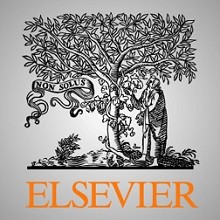
دانلود مقاله اجرای فنون هوش مصنوعی در محیط کنترل میکروگرید
چکیده
1. مقدمه
2. کنترل ریزشبکه
3. مروری اجمالی بر چارچوب هوش مصنوعی برای کنترل ریزشبکه
4. هوش مصنوعی در کنترل سلسله مراتبی - بررسی و بهبود احتمالی
5. ریزشبکه شبکه ای
6. بحث و دیدگاه های آتی
7. نتیجه گیری
منابع
Abstract
1. Introduction
2. Microgrid Control
3. Overview of AI framework for microgrid control
4. AI in Hierarchical control – review and possible improvement
5. Networked microgrid
6. Discussion and future scopes
7. Conclusion
Acknowledgement
References
چکیده
ریزشبکهها با تسهیل منابع انرژی توزیع شده (DERs) و تشکیل سیستمهای انرژی یکپارچه مبتنی بر مصرفکننده/خریدار مرکزی محبوبیت پیدا میکنند. یکپارچه سازی، هماهنگی و کنترل چندین DER و مدیریت انتقال انرژی در این محیط یک کار سخت است. تکنیک های کنترل کلاسیک برای پشتیبانی از محیط های ریزشبکه پویا کافی نیستند. به نظر می رسد پیاده سازی تکنیک های هوش مصنوعی (AI) یک راه حل امیدوار کننده برای افزایش کنترل و عملکرد ریزشبکه ها در شبکه های شبکه هوشمند آینده باشد. بنابراین، این مقاله به طور خلاصه به بررسی معماریهای کنترل، تکنیکهای کنترل مرسوم موجود، معایب آنها، نیاز به کنترلکنندههای هوشمند میپردازد و سپس امکان پیادهسازی هوش مصنوعی در ساختارهای کنترلی مختلف با تمرکز ویژه بر لایههای کنترل سلسله مراتبی را به طور گسترده بررسی میکند. این مقاله همچنین استراتژیهای کنترل مبتنی بر هوش مصنوعی را در محیطهای شبکهای/متصل/چند ریزشبکه ای بررسی میکند. این مقاله با خلاصه و حوزههای آتی پیادهسازی هوش مصنوعی در لایهها و ساختارهای کنترل سلسله مراتبی از جمله محیطهای ریزشبکه تکی و شبکهای به پایان میرسد.
توجه! این متن ترجمه ماشینی بوده و توسط مترجمین ای ترجمه، ترجمه نشده است.
Abstract
Microgrids are gaining popularity by facilitating distributed energy resources (DERs) and forming essential consumer/prosumer centric integrated energy systems. Integration, coordination and control of multiple DERs and managing the energy transition in this environment is a strenuous task. Classical control techniques are not enough to support dynamic microgrid environments. Implementation of Artificial Intelligence (AI) techniques seems to be a promising solution to enhance the control and operation of microgrids in future smart grid networks. Therefore, this paper briefly reviews the control architectures, existing conventional controlling techniques, their drawbacks, the need for intelligent controllers and then extensively reviews the possibility of AI implementation in different control structures with a special focus on the hierarchical control layers. This paper also investigates the AI-based control strategies in networked/interconnected/multi-microgrids environments. It concludes with the summary and future scopes of AI implementation in hierarchical control layers and structures including single and networked microgrids environments.
Introduction
Microgrids can be distinguished from any distribution network containing DERs by two distinct features. First, their capabilities to operate in an islanded mode confirms the resiliency and reliability of the network. Second, to appear as controlled and coordinated units viewing from the upstream network [1]. Microgrids provide noteworthy benefits to consumers as well as utilities, the majority of which include; higher reliability by incorporating flexibility at the community layer distribution network, improved power quality by managing flexible loads, reduced carbon emission by the diverse DERs, lowering transmission & distribution losses, cheap energy supply utilising more renewable resources, and the possibility of active participation in the energy markets [2], and must fully satisfy the network and load requirements at islanded mode [3].
Taking into consideration the large share of stochastic natured DERs comes with lots of uncertainty and a range of instances where effective controlling of the microgrid network becomes very critical. Interconnecting multiple microgrids as a network of microgrids can be an effective solution to accommodate and improve the operation quality of the large number of DERs. It has also been recognised that when multiple microgrids, geographically close to each other, are tied together through the distribution line to form a networked microgrid, the reliability and resilience of the interconnected microgrid can be significantly increased [4, 5].
Conclusion
This paper provides an overall review of AI-based control in microgrid environments. An overview of existing traditional control methods, their drawbacks, the need for AI techniques and their implementation at the different levels have been reviewed and future scopes have been presented. Despite system model complexities and challenges, it is found that AI can certainly be an important tool to enable the seamless integration and control of DERs at the local and networked levels. NN-based models are getting more focus on all levels. Most of the implemented AI techniques are physical model-based, whereas data-driven techniques should also gain more interest. Since a data-driven model doesn't require extensive physical system information, the design becomes less complex. However, in some specific applications like inertia estimation in the primary control, there is a lack of data available at the low voltage distribution network level. As ESS is becoming a core part of decarbonising the smart and microgrid networks, the datasets for ESS SoC levels which are accessible and open to the public require extensive preprocessing to improve the data quality and better predictability.
